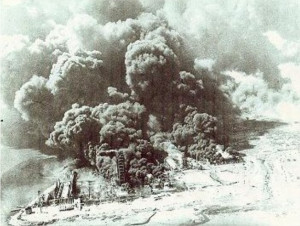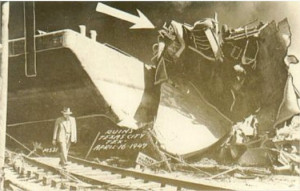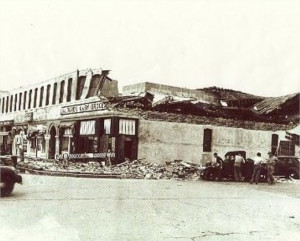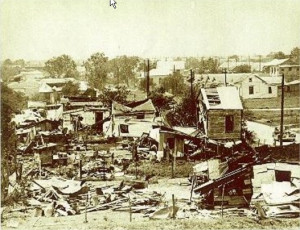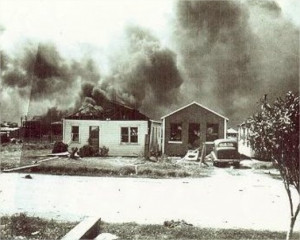At a port facility, a cargo vessel called GRANDCAMP already containing miscellaneous materials was loaded with fertilisers (ammonium nitrate serving as the base ingredient). The product, packaged into 45 kg bags, resembled small brown grains (composition: 32.5% nitrogen, 4%-5% mineral load, and 1% a coating mix made from Vaseline and resin). During the loading phase, 1,400 tonnes were placed in Hold 2 and another 800 tonnes in Hold 4. The next morning at 8 am, after smoke was detected in Hold 4, a small quantity of water was discharged onto the presumed firebox before reclosing the hold with restricted ventilation (by means of blocking orifices). The situation worsened, as pressure forced open the orifices through which a reddish orange smoke was escaping. At 9 am, the hull of the ship was already burning hot. A very violent explosion ensued at 9:12 am. Projectiles, quite large in some cases, were found far from the accident site (e.g. a 1.5-tonne anchor was blasted into a refinery more than 3 km away!). The explosion caused a tidal wave on shore. An adjacent ship, loaded with sulphur and ammonium nitrate (961 tonnes) also caught on fire. The inflamed vessel could be towed around 50 m away from the coastline out to sea, where at 1 am it exploded. The accident’s toll was approximated at 581 dead and 3,500 injured. Damage to the port and neighbouring dwellings was extremely severe. Glass panes far and wide were shattered. Fuel reserves ignited following the second explosion, as did a number of silos. Five days after the disaster, fires were still burning out of control in the city. According to literature, a cigarette sent in the dock would have started the fire. The fire smouldered overnight and was activated in the morning upon opening of the dock panes.



